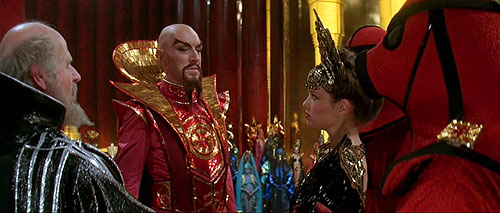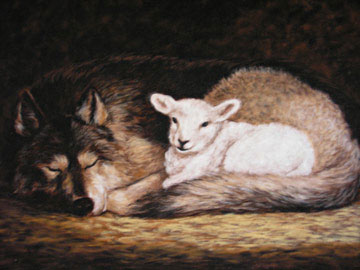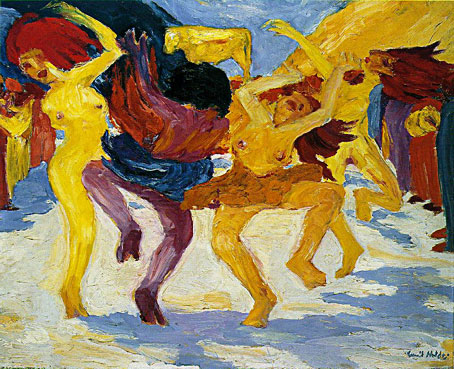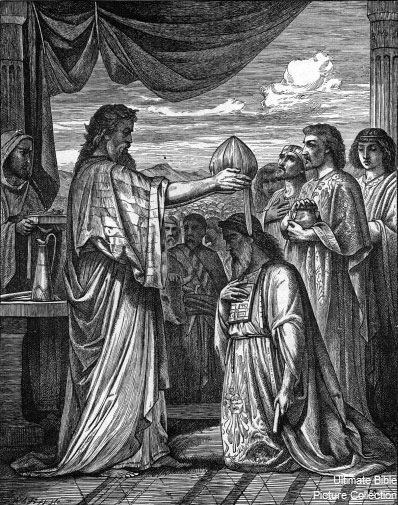The Man of Sin

One major difference between Jordan and other preterists is his identification of Paul’s “man of sin.” Jordan is correct in naming the Herods rather than Nero because he understands biblical typology better.

One major difference between Jordan and other preterists is his identification of Paul’s “man of sin.” Jordan is correct in naming the Herods rather than Nero because he understands biblical typology better.

Isaiah’s visions of Israel’s restoration have nothing to do with a future millennial golden age for the Jews, or even directly with the first century, except by the events of the Restoration era prefiguring later history. His words were for his hearers, for both their condemnation and their hope in the near future. Why do we get him wrong?
There are two kinds of whiteness in the Bible, and an understanding of this explains a great deal. There is the whiteness of covering and the whiteness of uncovering. And, as mentioned, the Bible makes a great deal out of the concept of covering.
Bone Collector
Purge me with hyssop, and I shall be clean; Wash me, and I shall be whiter than snow.
Touching a corpse made an Israelite unclean. The remains of those slain in battle were marked with lime for two reasons: so that they could be avoided by the clean, and so they could be gathered up and burned to lime by the bone collectors. Jesus said that the righteousness of the Pharisees was like a whitewashed sepulchre. Not only were they full of the ceremonial uncleanness of broken Covenant, their so-called righteousness was actually a mark from God upon them. They would be gathered to their people not by the Father sending His angels to the four corners of the Land, but by the father of lies and his scavengers sent by God to clean the wound.
This image goes right back to Genesis. Like the angels, the Covenant scavengers, though demonic, are also God’s servants. They are the raven of Noah surviving on floating corpses until the water goes down; they are the scavenging dogs that lick up Jezebel’s blood; they are the maggots in misused manna and abandoned grapes (false bread and wine); they are the unclean birds and animals that screech and howl inside the corpse of a defeated Babylon; they are worms inside Herod ‘enthroned’ as a human Gehenna.
The whiteness of the Pharisees was the whiteness of Miriam’s and Gehazi’s skin-plague. It is the whiteness of flesh and bones exposed as unclean to the eyes of God. Satan himself appeared as an angel of light, but like the Pharisees, he was a false lightbearer, a tutor guiding his children the wrong way.
The LORD called out to the man and asked, “Where are you?” Genesis 3:9
For those who wonder why God doesn’t fix all the wrong in the world right now, C. S. Lewis wrote that when the Author walks onto the stage, the play is over. That is true, but narrow…

Andrew Katay posted a quote this week stating that when the church fails to emphasise the Ascension, a commitment to church programs instead of to Christ fills the vacuum. This should come as no surprise.
And I looked, and behold, in the midst of the throne and of the four living creatures, and in the midst of the elders, stood a Lamb as though it had been slain, having seven horns and seven eyes, which are the seven Spirits of God sent out into all the Land. (Revelation 5:6)
The Bible is the story of the historic battle between the serpent-king and the servant king. Both sit on bloody thrones. Herod slaughters the innocents, and is then slaughtered by God. The innocent Christ is slaughtered, then sends His followers into the world as seven Spirits (Lampstand/Pentecost), but also as lambs among wolves.

In Through New Eyes, James Jordan notes that the wilderness was Havilah, the place mentioned in Genesis 2 that was rich in raw materials. Israel stripped Egypt of her gold, then plundered the desolate places of hidden wealth. She came out of the desert with a High Priest clothed in gems, and a new generation of soldiers born of God’s threshing floor.
The manna began to fall just after the Hebrews’ victory over Pharaoh. As with Jacob, the Lord was faithful to provide for His chosen one. But perhaps, in covering the ground, there is also the idea of a firmament (this might sound strange to some readers, but I have found the concept is a frequent one). The wilderness is the place of the humble bread of priesthood, displayed in obedience to God. It was the next generation that would drink the wine of Canaan after obedience under Joshua.
The Lord commanded that some manna be put into the Ark as a memorial. Symbolising manna, the white stone is a memorial of faithful priesthood. Joshua’s crossing of the Jordan was memorialised by large, engraved, white stones.
 Slumdog Millionaire might only be a bag full of clichés in a veneer of contemporary moviemaking, but as with Fight Club, the ending reminded me of the Last Days.
Slumdog Millionaire might only be a bag full of clichés in a veneer of contemporary moviemaking, but as with Fight Club, the ending reminded me of the Last Days.
There are two brothers, and the older one resorts to guns and Dutch courage to deal with opposition, which puts him in good stead with the biggest gangster in town. He helps his younger brother rescue the girl, but claims her for himself (for all the wrong reasons).
The film ends with the younger brother rescuing the wounded “bride”. Both brothers end up “in the money”: the faithful younger brother in a miraculous game show win, the older zealot in a bathtub (grave) full of gangster cash (blood money) before a deadly ‘suicidal’ shootout.
It might be “raw, unleavened melodrama” (as one critic put it), but it’s a story written by the Bible into the fabric of our culture, and one we are still hungry for despite our unbelief.
Zechariah’s night visions move God’s furniture around. As we saw, the instructions for the Tabernacle furniture align it with the Creation Week. And the Creation Week corresponds with the seven Feasts. Zechariah’s visions follow the Creation and Feast patterns, but the Tabernacle furniture has been shifted around all over the place.
Now, you will probably ask how eight visions can align with seven days or seven feasts. The answer is that it takes the two visions in chapter 5 to reflect the Day of Atonement. Thus:
“And in that day His feet will stand on the Mount of Olives, which faces Jerusalem on the east. And the Mount of Olives shall be split in two, from east to west, making a very large valley; Half of the mountain shall move toward the north and half of it toward the south.” Zechariah 14:4
Surprising as His ways are, the Lord always follows procedure. Like Ahasuerus in the book of Esther, anything that is done is done by decree. Although, in the case of Ahasuerus, he needed to consult his elders, whereas God only consults his maturing elders (like Abraham and David–and now the church) to bring us to greater maturity.
A decree is written in the Most Holy, the king’s garden court (head). The elders in the Holy Place respond with liturgy (body). And then they ride out into the world on the swiftest horses to incite a Holy War that divides the world to bring about a New Creation.